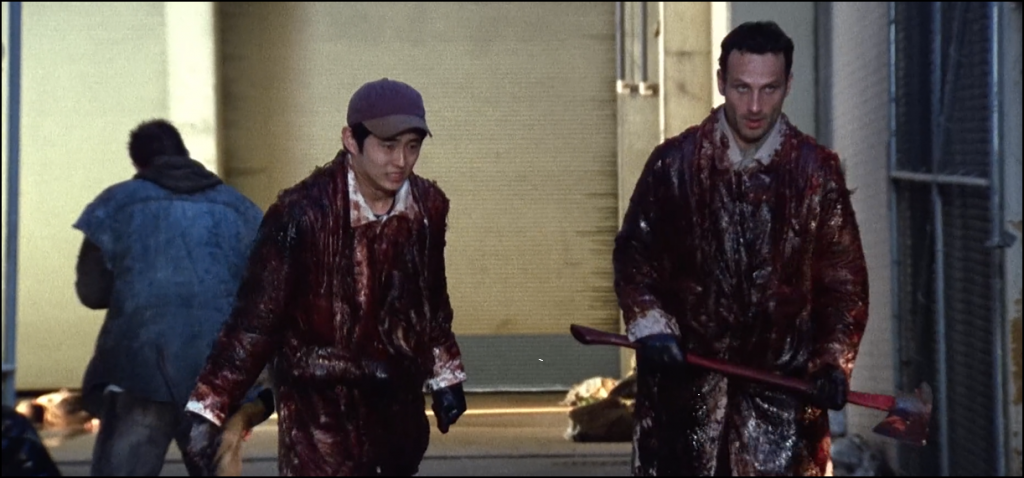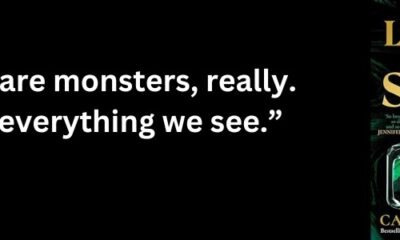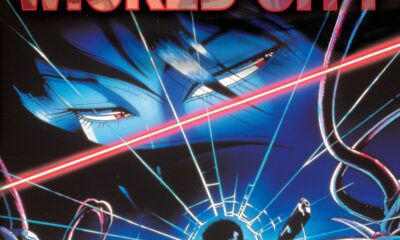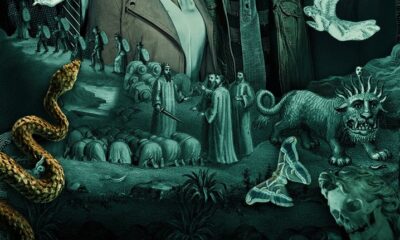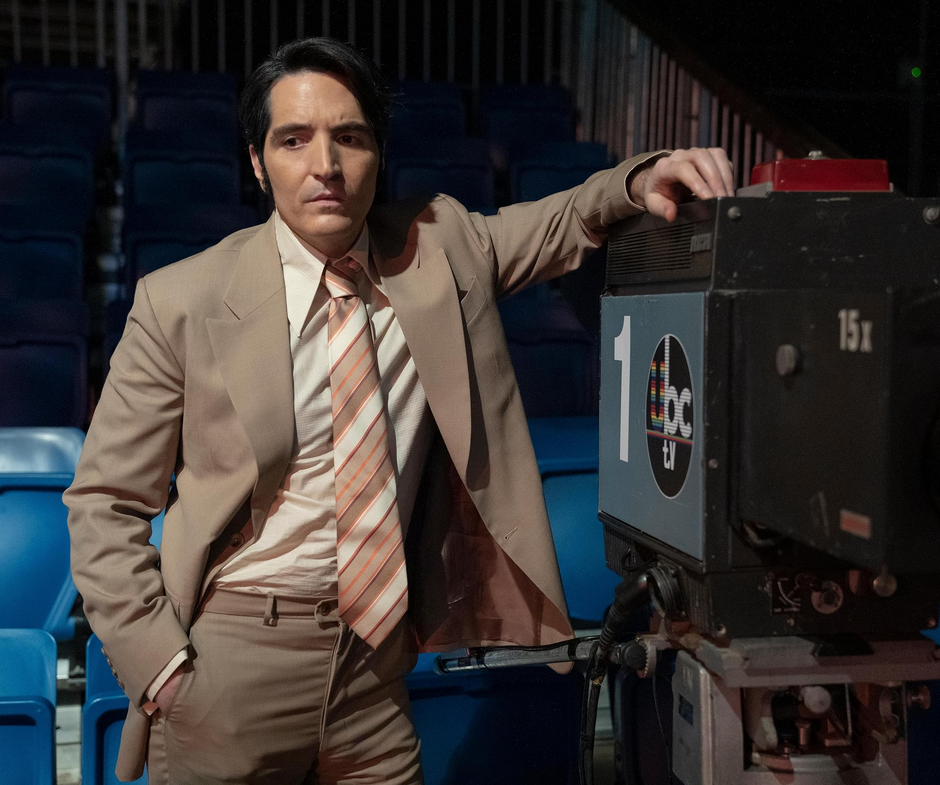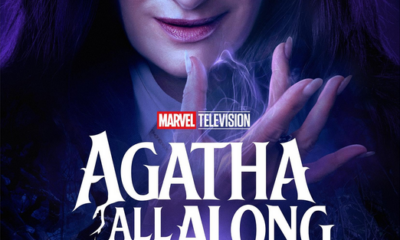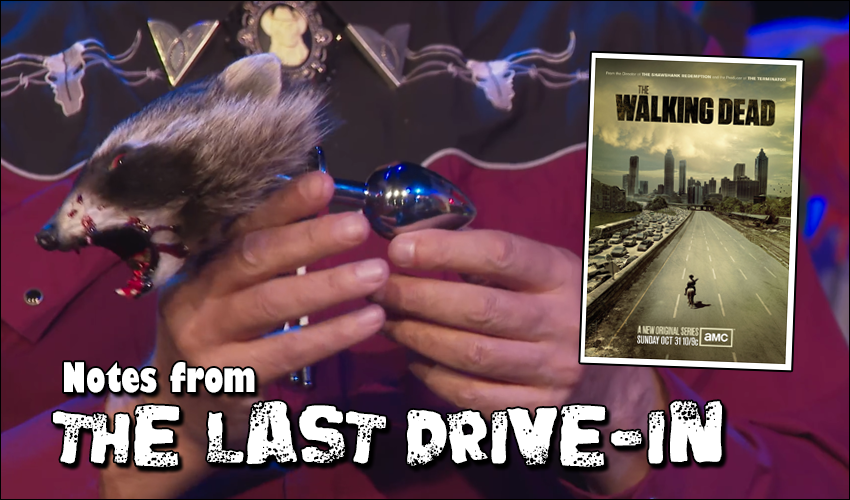
Notes from the Last Drive-In: The Walking Dead Special
More Videos
Published
3 years agoon
Welcome to “Notes from the Last Drive-In,” Haunted MTL’s review and recap series of The Last Drive-In with Joe Bob Briggs on Shudder. This is our second Joe Bob special in a month, but this time we cover the surprise special all about The Walking Dead. The Drive-In The Walking Dead special ran the first two episodes of the long-running zombie horror series. We not only were able to enjoy a visit from effects legend Greg Nicotero but had the distinct pleasure of seeing a raccoon buttplug (more on this later).
The appeal of #thewalkingdead was mind blowing. My step father was *not* a horror fan and he became obsessed with the show. It is insane how broad an audience it drew.#thelastdrivein @therealjoebob @kinky_horror @shudder— Haunted MTL 🏳️🌈 (@HauntedMTL) October 30, 2021
The Walking Dead – “Days Gone By”
I remember the night of the premiere.
Some car alarms outside our house freaked us the hell out, given what happens in the episode.#thelastdrivein @therealjoebob @kinky_horror @shudder— Haunted MTL 🏳️🌈 (@HauntedMTL) October 30, 2021
Halloween night, 2010, over 5.35 million Americans tuned into a zombie television show on a cable network. Adapted from a comic by Robert Kirkman and directed and written by film legend Frank Darabont, the pilot was too big to fail. The Walking Dead – “Days Gone By” featured British actors Andrew Lincoln and Lennie James, alongside future heavy-hitter Jon Bernthal to tell a gripping story about a man who awakes from a coma into a world where the dead have taken over.
The combination of Darabont and Kirkman here is wonderful. Where Kirkman’s writing is effective and the ideas are strong, Darabont took the material to another level. The comic itself is the equivalent of beautiful inked illustrations. The pilot was Darabont applying shading and color to create a deeper and fuller picture. Also helping in that regard, cinematographer David Tattersall gives the pilot a timeless 16mm treatment, like a glimpse into a lost late 1970s zombie film derived from Romero‘s Night of The Living Dead.
Lincoln is deft with his portrayal of Rick Grimes, a man on a mission, and Bernthal is charismatic even playing the worst guy you know. The episode belongs to Lennie James, though. His character’s story is the heart of the episode and creates an important narrative through-line that ultimately gets jettisoned until seasons later. And Lennie James acts the *hell* out of this. One wonders what would have happened had the show decided to stray from the source material and had the character of Morgan catch up to Rick in Atlanta.
The Walking Dead‘s pilot episode, “Days Gone By,” to this day, is a monumental achievement and one of the finest zombie stories ever filmed. Is it without flaws? Not entirely, no. Characters make odd decisions, some elements, such as the “Don’t Open – Dead Inside” door are still very campy. As a singular story, up through Rick Grimes riding into Atlanta? There hasn’t been such fine, classic zombie storytelling since the 1990’s Night of The Living Dead remake. Had the episode ended with Rick riding into Atlanta via the highway on horseback you would have had a brutal, effective film. That is not to say the final moments of the episode are bad, though, it just takes what could be a singularly excellent product and makes it part of a larger series that ultimately would not live up to the standards set by the pilot.
The pilot, really, is lightning in a bottle and it could not last. The first season already had some significant issues as it wore on, but between “Days Gone By” and “Guts” the promise was there, and for a while, the show was the premiere zombie entertainment of the 2010s. I admit I felt off around season six, myself, but for a long time, this show was an obsession that hit almost everyone in the United States, even people not into horror. It was astounding, and so much of it is a result of the pilot episode.
I won’t spend too much more time on this episode, or “Guts,” the second episode, because I am planning to revisit the series as a whole once it ends, but for now, for the purposes of the review, The Walking Dead – “Days Gone By” is near perfection.
Joe Bob-servations
Joe Bob’s assessment of the first feature? Four stars. While the special does smell a bit of a company mandate (maybe more of a firm suggestion), it also just genuinely felt like an acknowledgment that The Walking Dead has an important place in horror history and one that is quite deserved.
Listening to Joe Bob Briggs break down the rules of The Walking Dead universe was quite fun, especially his observations about how cynical and dark the world can be. Also of great fun was one of those infamous Joe Bob Briggs lectures, complete with map and pointer. For me, personally, this was entertaining because every time he named a movie I was able to say “been there, saw that.” It made me feel like a real zombie expert, likely along with a lot of the other hardcore zombie fans watching The Last Drive-In.
Particularly great was having Greg Nicotero and series make-up artist Carey Jones at the drive-in. The heavy dive into the incredible effects work and crushing schedule of The Walking Dead was fascinating and slightly anxiety-inducing. The speed and scale of the work from season one are truly a marvel of production design. Of course, we also see the start of turning Darcy into a walker in the first half of the night as well. Being able to get schooled on zombies and the makeup process was quite a treat for a pre-Halloween show.
As far as new observations on the original season of the show and the masterful pilot episode, I didn’t learn much, but I also was a Walking Dead-head for quite a while, having read all the comics and been into the show for about 6 seasons or so. That being said, it was fun to be reminded of just why the pilot was so important to horror on TV.
Final Thoughts on The Walking Dead – “Days Gone By”
I could write a lot about The Walking Dead – “Days Gone By” because it is a cultural touchstone for zombie storytelling. That might be a topic best saved for another kind of article, however. As a feature for a Drive-In episode? It’s solid – maybe not quite doing things “The Drive-In Way” we are used to, but it is also just such a quality production. The Last Drive-In has been fortunate to deftly weave between the “trash” and “treasure” that makes up the horror scene – all of it wonderful, across three seasons and several specials. However, for some of the more hardcore mutants this episode might be a miss. Not for me, though. I would give “Days Gone By” the full five-Cthulhu treatment.

Best Line: “Yeah. They get more active after dark sometimes. Maybe it’s the cool air or… Hell, maybe it’s just me firing that gun today. But we’ll be fine, long as we stay quiet. Probably wander off by morning. But listen, one thing I do know… Don’t you get bit. I saw your bandage and that’s what we were afraid of. Bites kill you. The fever burns you out. But then after a while… You come back.” – Morgan Jones
The Walking Dead – “Guts”
I really appreciate the dynamic between Rick and Glenn established here, Rick is showing leadership by the simple act of pragmatism and letting Glenn lead.#thelastdrivein @therealjoebob @kinky_horror @shudder— Haunted MTL 🏳️🌈 (@HauntedMTL) October 30, 2021
“Guts” is the second episode of The Walking Dead‘s mostly-excellent first season and is what served as the transition point of what felt like the first episode’s “movie” style to the larger episodic nature of the series. Directed by the brilliant Michelle MacLaren, one of the most accomplished television directors out there with some incredible series under her belt, the episode is strong. The second episode has a lot to do, introducing a very large array of new characters, and MacLaren’s directorial sense, combined with Darabont’s writing handles it pretty well. For example, the episode is big on the idea of show, don’t tell. We’ll cover that in a moment.
The episode fleshes out some of the figures introduced at the tail end of episode one. Notably, Lori Grimes (Sarah Wayne Callies), Rick’s wife, is having an affair with Shane (Jon Bernthal). We also have Rick’s son, Carl (Chandler Riggs). We also get to spend more time with survivors Dale (Jeffrey DeMunn) and Glenn (Steven Yeun) while also introducing a whole group of survivors in a besieged department store, including Andrea (Laurie Holden) and Merle (Michael Rooker). Everyone is solid here. Lincoln comes out a little stronger as a moral compass while not being overshadowed by Lennie James. Steven Yeun quickly establishes himself as the heart of the show through Glenn. Michael Rooker is Michael Rooker – pretty much the perfect deplorable bastard. I was surprised he didn’t just chew his way through the handcuffs as he did with the scenery.
The cast swells dramatically in this episode and there is a lot to establish in the world, too. One brilliant way in which that is handled is through the set design. Between Alex Hajdu and Lisa Alkofer, the world of The Walking Dead feels so much bigger and well-worn that most other horror shows would have managed to pull off, prior. Meanwhile, this episode’s cinematography from David Boyd gives the entire episode a gritty, sweaty, and grimey (pun-intended) layer, made even more horrible by the addition of dripping blood and guts from Nicotero’s team.
The second episode is largely great but does have some rather odd moments. Two examples: the lack of barricades used by the survivors for one, and the somewhat narratively pointless sewer jaunt to show us what we already know for two. None of that matters though because the survivors are dumbasses. It’s too early for them to be smart about any of this and they are still putting pieces together. This is exemplified from the best scene in the episode, where Rick and the survivors dismember a zombie to disguise their scents with guts and offal. It features a speech by Rick about the new world and a dark joke about organ donors by Glenn. It’s one of the most perfect scenes of the show that tells you everything important that you need to know.
The show absolutely had a difficult task ahead of it following the pilot, but it largely succeeds.
Joe Bob-servations
Our venerable host awarded the second episode four stars. There was a lot of great discussion with Greg Nicotero about the production of the show, following up on points established in the first half of the night. Joe Bob also made some quite salient points of The Walking Dead being a western, particularly given the frontier-like nature of the zombie apocalypse. Lastly, I appreciate the discussion on the lasting impact of the series. Despite the very vocal community of The Walking Dead haters, the show is still absolutely a top performer in horror television and spawned an entire, massive franchise, all derived from the comic book.
Of course, the highlight of these host segments was the journey of Darcy becoming the living dead through the efforts of make-up effect artist Carey Jones. Zombie Darcy sluggishly chewing the scene as a zombie was quite adorable. Plus… one fan sent in a raccoon-heat buttplug. What a great introduction to the show from curious fans of The Walking Dead.
Final Thoughts on The Walking Dead – “Guts”
“Guts” has some heavy lifting to do regarding the task of turning a film-like pilot into part of a longer television narrative and largely succeeds. Though there are some cracks that show in logic in order position characters in certain situations, the episode is strong. Much of the strength comes from the episode’s primary setpiece involving those titular “guts.” Overall, the episode is a four-Cthulhu effort. Not as sterling as the pilot, but certainly no slouch, either.

Best Line: “If bad ideas were an Olympic event, this would take the gold.” – Glenn
Haunted MTL Drive-In Totals
We have our official Drive-In totals from Shudder, of course.
One hundred and nine dead bodies. That’s a respectable drive-in total! #TheLastDriveIn #TheWalkingDead pic.twitter.com/FtQeQcVHaK— Shudder (@Shudder) October 30, 2021 Can we get #AardvarkingInTheWoods trending? #TheLastDriveIn #TheWalkingDead pic.twitter.com/4TzBmhyg6H— Shudder (@Shudder) October 30, 2021
As for our own totals, we have –
- 1 undead mail girl
- 2 special effects makeup experts
- 3 rules of The Walking Dead
- 5 rules of the Romero zombie
- a bajillion car alarms
- Zombie BBQ
- Zombie schooling
- Gratuitious zombie history lecture
- gratuitous prop collection reveal
- Raccoon head buttplug
- Corporate synergy fu
- Walker makeup fu
- Cannibal jokes
- Lawyer jokes
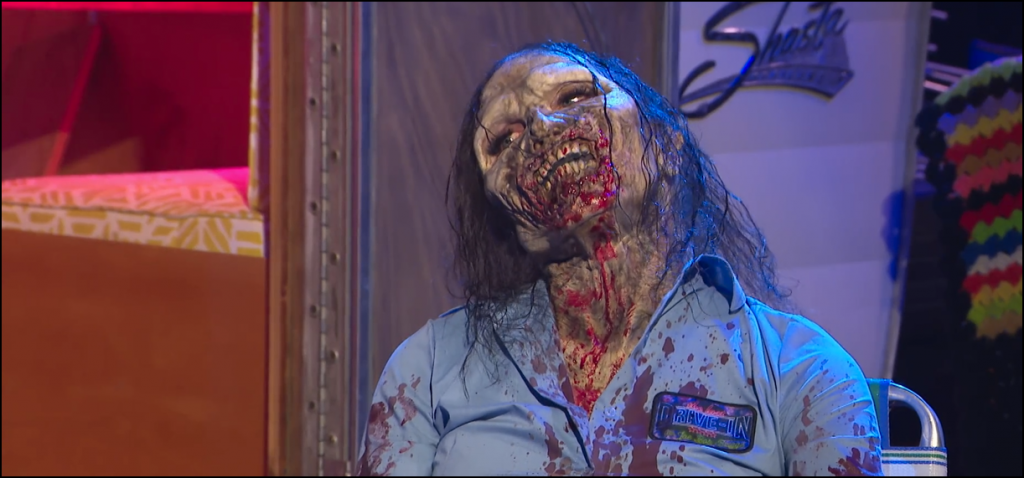
Episode Score
I will never complain about new specials for The Last Drive-In and as far as I am concerned, The Walking Dead is right in the wheelhouse of the show. I know some fans were a bit negative about the focus being on The Walking Dead, but they let their perspective be clouded by what the show had become, and not what it was. This special also had the bonus of deep, insightful discussion about what the appeal of the zombie is, what makes a zombie look good, and even a few nods to how tight the show’s cast and crew had become. This show was a great reminder about what was so revolutionary about The Walking Dead, and Joe Bob Briggs is just the right voice to convey that to the audience.
This installment of The Last Drive-In was also quite a good introduction to what fans love about Joe Bob Briggs and the crew of the show, raccoon-buttplug and all. it is goofy, affectionate, but also knowledgeable and insightful. Where else can you get a glimpse of Greg Nicotero’s process and props without breaking into his home, really? Plus, the fun of turning Darcy into a walker is not something you see on most horror-hosting shows. Likely, for many viewers of The Walking Dead, this may be their first encounter with Joe Bob, and horror hosting outside of Elvira. Just be thankful we can show more people how things are done the Drive-In way.
 (4 / 5)
(4 / 5)
We’ll see you again with a new review and recap in December when The Last Drive-In returns with a Christmas Special. I confirmed this directly with Darcy on Saturday at the Victorville Scarefaire. So until then, mutants, please let us know what you thought of the night or the review for that matter. And please browse Haunted MTL for even more horror news, reviews, and fiction.
Honestly? I think Joe Bob doing commentary on more #TheWalkingDead episodes would be a slam dunk for AMC and Shudder. Even if it is just him reacting to the show as an audio track.#thelastdrivein @therealjoebob @kinky_horror @shudder— Haunted MTL 🏳️🌈 (@HauntedMTL) October 30, 2021
David Davis is a writer, cartoonist, and educator in Southern California with an M.A. in literature and writing studies.

You may like
Movies n TV
Wicked City (1987), a Film Review
Wicked City (1987) is a dark fantasy horror animation following a world at the brink of war as mortals and supernatural being clash.
Published
1 day agoon
October 22, 2024
Wicked City (1987) is a dark fantasy horror and the debut feature-length animation of director Yoshiaki Kawajiri. This unrated film adapts the first novel of the Wicked City series, Black Guard. It stars Yûsaku Yara, Toshiko Fujita and Ichirô Nagai. As of this review, Wicked City is available on Prime and Crunchyroll.
As the peace between the mortal and supernatural worlds ends, forces clash in a plot to establish a new order. Tasked with protecting the best chance for peace, Taki (Yûsaku Yara) must guard Giuseppe Mayart (Ichirô Nagai). A Black Worlder named Makie (Toshiko Fujita) remains his partner in this pursuit. Can the three brave the challenges and establish a world of peace?
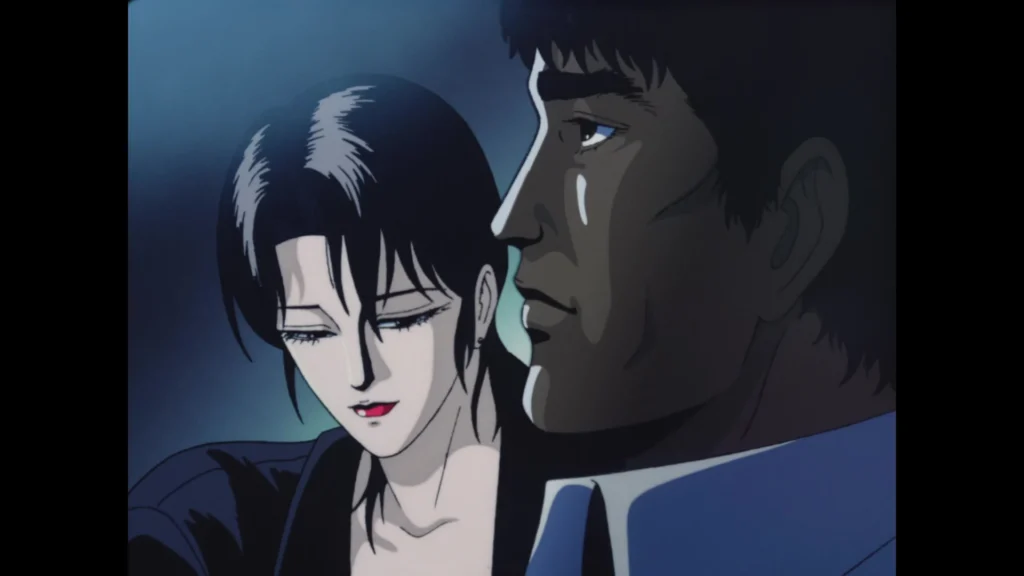
What I Like about Wicked City
Wicked City works best in its parts, providing strong and interesting elements that don’t inherently add up to the whole. The art style and design evoke a memorable aesthetic. There’s a charm to this 80s-era anime that creates either an environment for abominations or spectacles.
It makes sense that Wicked City is an adaptation because the plot depicted seems like parts of a larger narrative we do not see in the film. From what remains, the world and political scheming seem worth exploring. Unfortunately, little of this plot receives depth.
Prior to this, Yoshiaki Kawajiri contributed to many TV shows, exercising a new muscle as he directed a film-length work. He seems invaluable on a team, as his filmography and success indicate, but his directorial contributions don’t seem as critically successful. This effort and work best express themselves in the level of animation and scenes depicted in this flawed film.
Despite the missing pieces throughout the film, the ending seems complete. While there’s clearly room for a sequel, Wicked City tells its story and suggests an answer to the new era’s direction.
Supposedly, this started out as a short film, but Yoshiaki Kawajiri’s execution earned enough attention and respect to get a green light for a feature-length film. This work was all done within a year. Assuming this is true, Wicked City’s completion and animation quality deserve respect.
It received a live-action adaptation. From my understanding, the film adapts the anime, but I hope and imagine some of the manga gets explored to make a more functioning plot.

Tired Tropes and Triggers
Sexual assault and rape remain grotesquely overused in the film. Such subject matter has a place in art, but its use in Wicked City gravitates more toward exploitation and spectacle. Many of the visual designs make most of the fight allegories for sexual assault atop the actual assaults.
As most creatures are organic, there’s a heightened amount of body horror. There’s a level of separation in animation as opposed to live-action body horror, but this point certainly applies to those sensitive to such material.
From what we learn of the characters, many decisions directly contradict their supposed purpose.
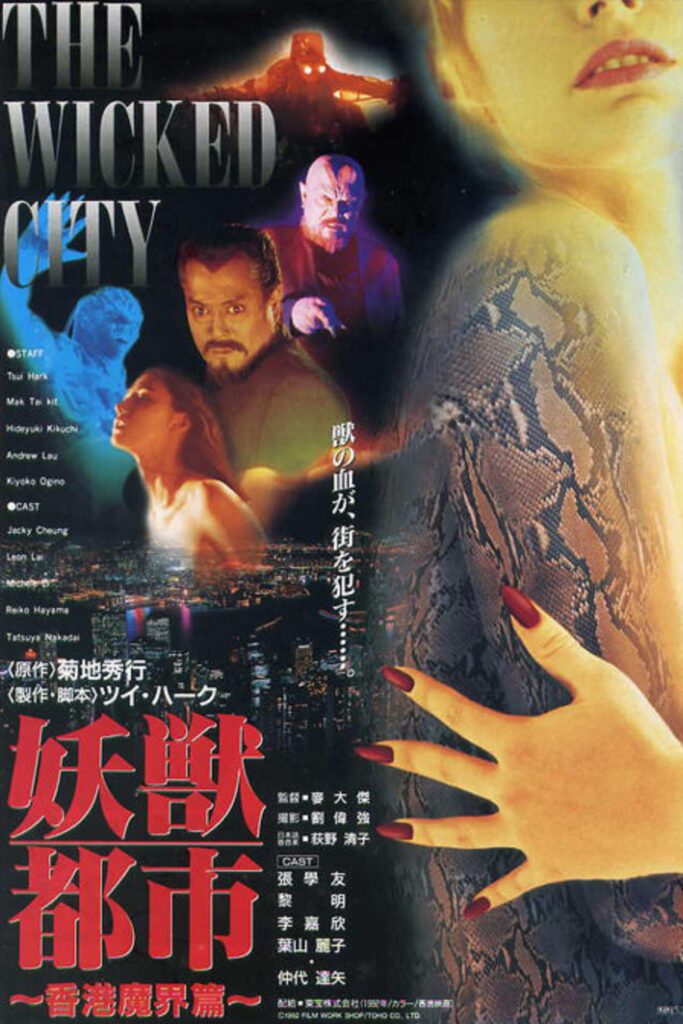
What I Dislike about Wicked City
Wicked City circles forums and rank-listings as a cult classic or niche horror, but it’s flawed in almost every way. Ideally, such works might have a plot that draws one in. Wicked City has a concept of a plot that evokes interest but doesn’t communicate it well or explore its depths. Ultimately, it’s a film made up of its parts. The good gets outweighed by the dysfunctional points.
Frankly, the romantic tension between the two leads is underdeveloped. I hesitate to say it doesn’t exist because there’s some work implemented with this in mind. Viewers note the work in the film, but it lacks polish or sensibility.

Final Thoughts
Wicked City is a flawed work from a successful animator. If given more time to develop, perhaps a staple of the 80s might exist. Unfortunately, the film has merits in its parts but falls in connection to the whole. However, for those who can overlook the limitations and exploitations, there are many worthy parts that excel in terms of animation quality and creative decisions.
Released in 2023, Late Night with the Devil is a found-footage movie about a late-night host who’d do anything to have the top-rated show.
Don’t worry, it’s not about Jay Leno.
The story
Our story begins, as many found footage films do, with a quick explanation. What we are going to see is the surviving footage from the last episode of a late-night show, along with some never-before-seen footage of backstage during the fateful night everything went wrong.
We then meet Jack Delroy. He’s a late-night host of the show Night Owls. And a year after the death of his beloved wife, he worries that his show is going to be canceled. The ratings are freefalling. So, on Halloween, he invites a girl named Lilly on the show who claims to be possessed.
Because that’s going to go well.
The show begins with a monolog, like most late-night shows. We then meet the first two guests, a claimed psychic named Christou and a stage magician slash skeptic named Carmichael Haig. After hot-reading the audience, Christou appears to have a real psychic vision. One that involves Jack’s deceased wife. He then proceeds to vomit black sludge all over the stage.
You’d think that would be the end of things. It would be stupid to still bring on the possessed girl after a warning like that.
But, of course, the show must go on.
What worked
Late Night with The Devil dedicated itself to the found footage vibe. As such, it felt very much like you were watching something from the 70s. The whole movie is at a lower, grainy resolution, unlike some other horror films that eventually and subtly switch out for a more modern and clear picture. The clothes, the music, the cheap and cheesy costumes. It all reminds one of a good episode of the Brady Bunch or Bewitched. Even when someone’s puking black blood or has worms pouring out of their freshly opened gut.
I was also quite impressed by the acting in this film. Especially that of David Dastmalchian, who played Jack Delroy. This role was performed to perfection. Jack manages to come off as a kind, compassionate man. The sort of person you’d be comfortable talking to, even about the most horrible moments of your life. You get the feeling that you could tell him about the worst moments of your life and he’d thank you for sharing.
This kind facade never slips. But we also see his true motivations. He doesn’t care about anyone, no matter how kind he acts. The show must go on is his entire drive and mission. He didn’t let a little thing like a guest dying stop him. Or a mental breakdown on stage. Or even his dead wife calling to him from beyond the grave.
The show must go on. And on, and on.
Even Dastmalchian is outshined, however, by Ingrid Torelli who played Lilly.
Lilly was a creepy character from the first time we saw her. There is something so unnerving about a child who knows far more than they should. This is a hallmark of demon possession films, all the way back to Reagan. But there’s also something else about the way she behaves that has little to do with the possession. She is always looking to either June or Jack for direction. As much as she speaks to the adults like she knows one, she is still always looking to please the adults around her. She is eager to look at the right camera at the right moment. She is eager to be obedient. It’s hidden, but for someone who has seen enough cult content, it’s easy to spot. She played a former cult victim very well. And that was perhaps the most terrifying part of that character.

What didn’t work
This was almost a perfect movie. Then, like so many others, it just couldn’t stick the landing.
Near the end of the film, there is a strange scene that doesn’t seem to mesh with the rest of it. It appears to be a collection of Jack’s memories. Whether they are true memories or not is left to our interpretation. But they explain the entire reveal of the whole movie. In dull, excruciating detail.
This series of scenes was insulting. It was the equivalent of asking someone if they got the joke. But are you sure you got it? Wait, let me explain it and really just kill the effect altogether.
We were already laughing. Or, to step away from this metaphor, we were already creeped out. We were already grossed out. We were already living in the scene, sitting in the audience right next to the lady who lost her son or the man dressed as a skeleton. Rather than explain the twist, which didn’t need explaining, this scene pulls us rudely out of that audience and deposits us back in the real world.
All that being said, Late Night with The Devil is still a terrific horror film. It was dark, it was gorey, and it left us with unsettling questions even after the ill-planned info dump. If it isn’t already on your Halloween watch list, it certainly deserves a spot.

Movies n TV
“B is for Brain” (Evil: S2E8)
“B is for Brain” is an episode of the supernatural drama Evil. The assessors investigate new brain mapping research.
Published
2 days agoon
October 21, 2024
“B is for Brain” is an episode of the supernatural drama Evil, created by Michelle King and Robert King. The central cast includes Katja Herbers, Mike Colter, Aasif Mandvi, Michael Emerson, Christine Lahti, and Andrea Martin. It originally aired under CBS before moving to Paramount+. As of this review, it’s available through Netflix and Paramount+ and its add-ons.
The assessors investigate new brain mapping research that might expose others to God and Hell. Kristen (Katja Herbers) struggles with aggression as Andy (Patrick Brammall) returns from his expedition. Ben (Aasif Mandvi) struggles with what he sees while in the brain mapping process. David (Mike Colter) returns to the basics to find God.
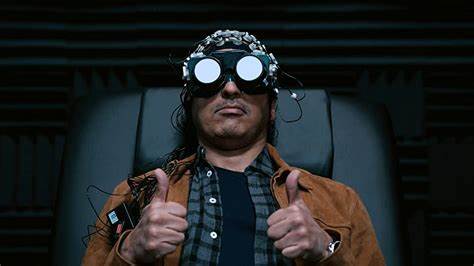
What I Like about “B is for Brain”
“B is for Brain” provides a unique opportunity for viewers to gain more insight into Ben’s past. While not his episode, as “B is for Brain” balances the leads nearly perfectly, he has his most emotional moment in the series so far. Despite the lower stakes, it provides a more vulnerable moment than “E is for Elevator.”
Leland (Michael Emerson) and Sister Andrea (Andrea Martin) meet again on more equal terms and establish their hostile relationship. Sister Andrea proves herself to be a woman who doesn’t back down when a Satanist tries to intimidate her. It also raises the necessity of David’s training, creating a more tangible threat.
Kristen’s deteriorating relationship with Andy reaches a boiling point as her impulsiveness and hostility reach new heights. It seems her sabbatical to the monastery might have increased the evil influences. “B is for Brain” builds upon what “S is for Silence” introduces and creates an interesting interpretation of the last episode’s events.
“B is for Brain” brings a new dynamic to its horror by focusing on how technology, science, and religion intersect. There’s an incredibly diabolical conversation on how this technology could induce fear to empower religion. This idea evokes a more subtle horror than most episodes.

Tired Tropes and Triggers
There is a potential nay-theist trope. By that, I mean there’s a single line where one can interpret an atheist character turned from God because God turned from them. It’s a single line that remains interpretable, but it’s worth mentioning.
There’s a moment of self-harm with clear implications that this is a pattern with the specific character. This harm has some implication of demonic influence, but this remains unconfirmed at the moment. I will mention this becomes more obvious as the season continues.
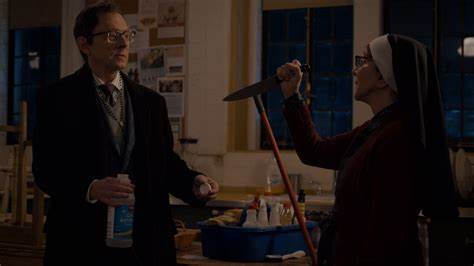
What I Dislike about “B is for Brain”
Unfortunately, such a big reveal for Ben’s character doesn’t have time to get fully explored in “B is for Brain.” While the focus between the three is great, a few big reveals only earn a light address. It’s less that Ben doesn’t get a fair amount of attention and more that these subjects don’t receive that attention.
A similar point remains relevant about the claim of using brain mapping as a way of evoking religious conversion. That point merits interrogation from the characters and the plot, but it’s only lightly touched on. Further expanding these points is that there’s only light reference in the future specifically about brain mapping.

Final Thoughts
“B is for Brain” gets placed into two memorable episodes, diminishing its lasting power. While not a fault of the episode, it does overlook some potentially big reveals. Some of the more relevant character moments will receive the attention they deserve in later episodes, but it doesn’t aid “B is for Brain” in execution. While a strong and enjoyable episode, diving into those moments might have created an episode that haunts the viewer.


